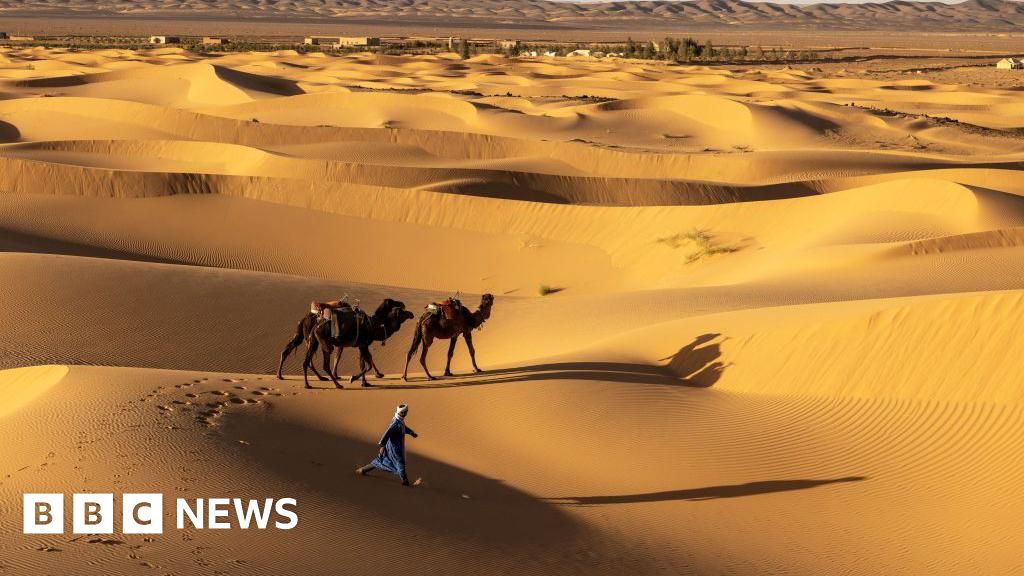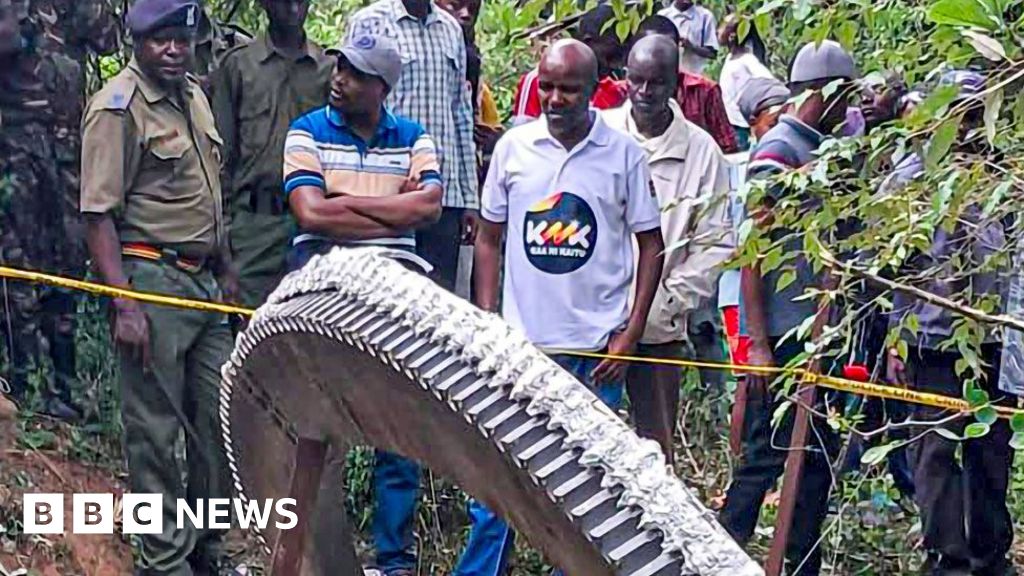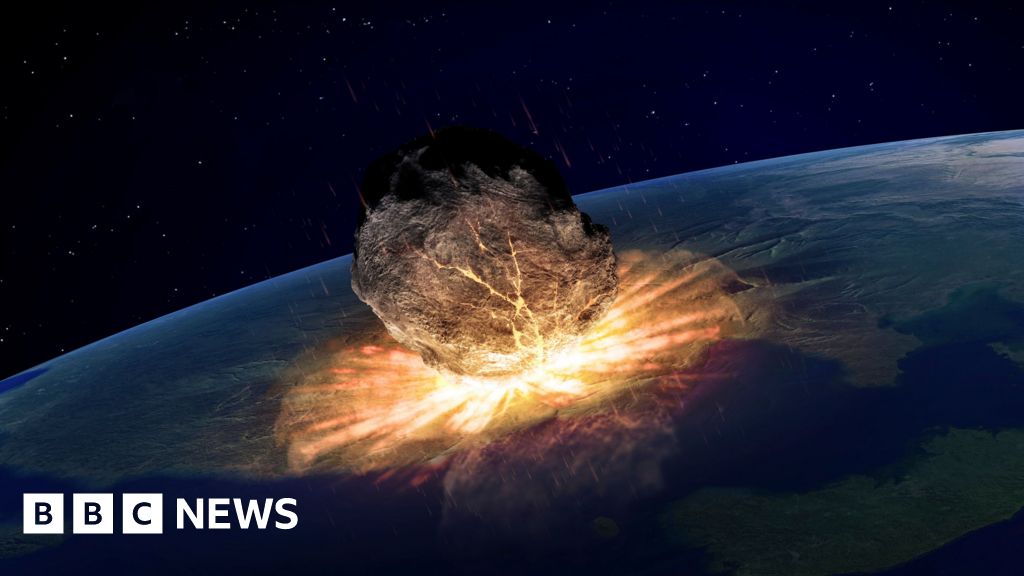
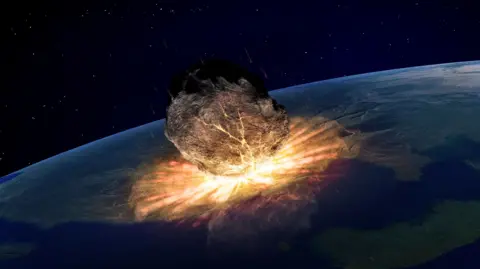 Getty Pictures
Getty PicturesA excess meteorite first found out in 2014 brought about a tsunami larger than any in recognized human historical past and boiled the oceans, scientists have found out.
The length rock, which was once 200 occasions the scale of the person who burnt up the dinosaurs, smashed into Earth when our planet was once in its infancy 3 billion years in the past.
Wearing sledge hammers, scientists hiked to the affect web site in South Africa to chisel off chunks of rock to grasp the strike.
The workforce additionally discovered proof that large asteroid affects didn’t convey most effective devastation to Earth – they helped early era thrive.
“We know that after Earth first formed there was still a lot of debris flying around space that would be smashing into Earth,” says Prof Nadja Drabon from Harvard college, govern writer of the brandnew analysis.
“But now we have found that life was really resilient in the wake of some of these giant impacts, and that it actually bloomed and and thrived,” she says.
The meteorite S2 was once a lot greater than the length rock we’re maximum usual with. The one who ended in the dinosaurs’ extinction 66 million years in the past was once about 10km vast, or nearly the peak of Mount Everest.
However S2 was once 40-60km vast and its pile was once 50-200 occasions higher.
It struck when Earth was once nonetheless in its early years and seemed very other. It was once a H2O global with only some continents protruding of the ocean. Age was once quite simple – microorganisms composed of unmarried cells.
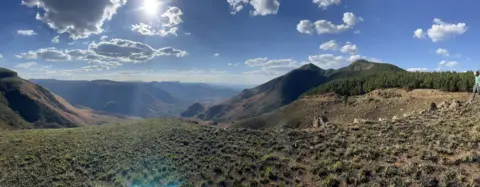 Nadja Drabon
Nadja DrabonThe affect web site in Jap Barberton Greenbelt is without doubt one of the oldest parks on Earth with remnants of a meteorite strike.
Prof Drabon travelled there thrice along with her colleagues, using so far as conceivable into the far off mountains sooner than mountain climbing the remainder of the best way with backpacks.
Rangers accompanied them with system weapons to give protection to them towards wild animals like elephants or rhinos, and even poachers within the nationwide landscape.
They had been in search of spherule debris, or minute fragments of rock, left at the back of via affect. The usage of sledge hammers, they amassed masses of kilograms of rock and took them again to labs for research.
Prof Drabon stowed essentially the most valuable items in her baggage.
“I usually get stopped by security, but I give them a big spiel about how exciting the science is and then they get really bored and let me through,” she says.
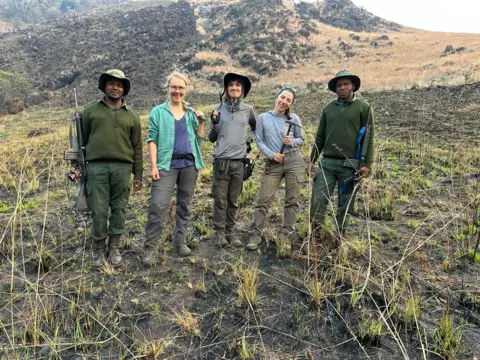 Nadja Drabon
Nadja DrabonThe workforce have now re-constructed simply what the S2 meteorite did when it violently careened into Earth. It gouged out a 500km crater and pulverised rocks that ejected at extremely speedy speeds to method a cloud that rotated around the world.
“Imagine a rain cloud, but instead of water droplets coming down, it’s like molten rock droplets raining out of the sky,” says Prof Drabon.
A excess tsunami would have swept around the globe, ripped up the ocean flooring, and flooded coastlines.
The 2004 Indian Ocean tsunami would have paled when compared, suggests Prof Drabon.
All that power would have generated large quantities of warmth that boiled the oceans inflicting as much as tens of metres of H2O to evaporate. It could even have higher wind temperatures via as much as 100C.
The skies would have grew to become dull, choked with mud and debris. With out daylight penetrating the darkness, easy era on land or in shallow H2O that trusted photosynthesis would had been burnt up.
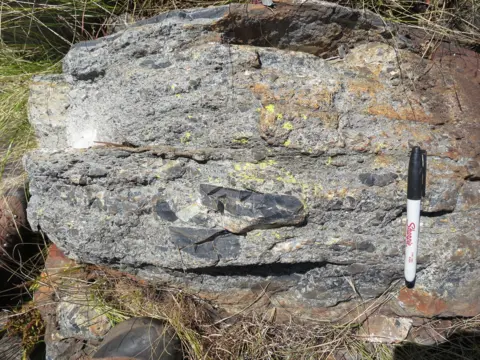 Nadja Drabon
Nadja DrabonThose affects are indistinguishable to what geologists have discovered about alternative weighty meteorite affects and what was once suspected for S2.
However what Prof Drabon and her workforce discovered nearest was once unexpected. The rock proof confirmed that the violent disturbances churned up vitamins like phosphorus and iron that fed easy organisms.
“Life was not only resilient, but actually bounced back really quickly and thrived,” she says.
“It’s like when you brush your teeth in the morning. It kills 99.9% of bacteria, but by the evening they’re all back, right?” she says.
The brandnew findings recommend that the weighty affects had been like a immense fertiliser, sending crucial substances for era like phosphorus around the world.
The tsunami sweeping the planet would even have introduced iron-rich H2O from the depths to the skin, giving early microbes difference power.
The findings upload to a rising view amongst scientists that early era was once if truth be told helped via the violent succession of rocks placing Earth in its early years, Prof Drabon says.
“It seems that life after the impact actually encountered really favourable conditions that allowed it to bloom,” she explains.
The findings are revealed within the clinical magazine PNAS.



